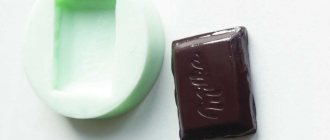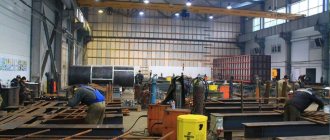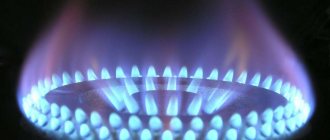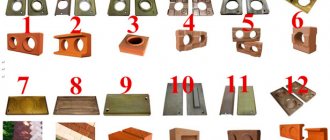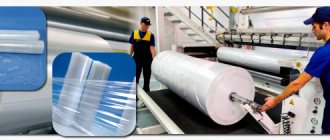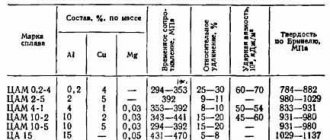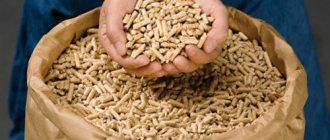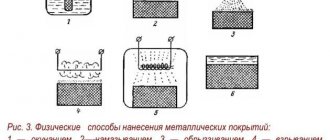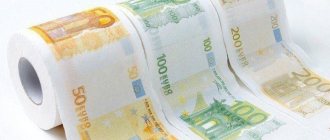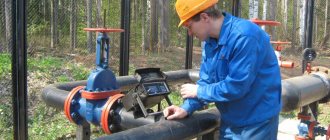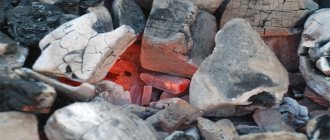Oriented strand boards (OSB) are an inexpensive structural and finishing material made from wood chips.
In terms of its mechanical properties, it is slightly inferior to plywood, but superior to fiberboard and chipboard .
Due to its low price, it is in great demand, so a properly organized OSB production business will bring good profits .
Next we will tell you:
- how OSB boards are produced;
- what equipment is used and how much it costs;
- are any permits and licenses needed to start production;
- where is it more convenient to locate production;
- how to write a business plan;
- how and where to sell finished slabs;
- how to increase income and reduce costs in the production and sale of OSB.
Manufacturing technology
The technology consists of the following successive stages:
- log debarking;
- receiving chips;
- drying and sorting of the resulting material;
- processing of chips with glue (resinization);
- creating a carpet with chip orientation within each layer;
- pressing;
- cutting and labeling of finished products;
- additional processing.
Log debarking
Depending on the technology used and the equipment installed, this operation can be performed in different ways.
At some enterprises, debarking is carried out without any preliminary preparation; at others, the logs are first steamed or soaked, then the bark is removed in several stages , including washing .
Equipment for the debarking section is selected based on the main material that will be used to produce chips.
Therefore, one machine is required to work with thin logs and branches, and a completely different machine to work with large logs.
The debarking section is installed even if the main material for the manufacture of slabs is carpentry waste or sawn wood trimmings .
There is a possibility that for some reason the supply of these trimmings will stop or its volume will be less than expected, so you will have to use substandard wood, that is, crooked and thin tree trunks.
The debarking section is mounted next to the access roads , thanks to which a crane with a special gripper can reload material from the cars into the receiving hopper of the machine.
To ensure round-the-clock work, a hangar or canopy is erected over the debarking area and access roads, protecting the equipment and operator from precipitation. The bark removed from the wood falls into a special receiver, from where it is delivered by a conveyor to the dryer, then enters the boiler room, where it is used as fuel for heating the premises.
Receiving chips
To obtain chips, various technologies are used, one of which is to first saw the logs into pieces 10–15 cm long .
Then they are either planed on a special machine, producing long chips, or sawed on a device with many disks.
The distance between the discs corresponds to the chip thickness.
The planing method is more productive, but the chips are of slightly worse quality due to torn edges, but the sawing method is several times inferior in productivity.
There is another technology in which logs, without sawing, are fed with their ends to a machine , where they are planed by a large shaft with knives attached to it. Moreover, the knives are installed so as to ensure a chip width of 10–50 mm .
For this method of producing chips, only wood scraps and logs of small thickness are suitable. More information about the production of chips can be found here.
The chipping section is installed not far from the debarking section, which reduces the cost of conveyors.
In modern lines, the operation of this section occurs automatically , because the supply of chips must occur in portions so that all other equipment has time to process it.
On many lines, a special stand is installed in front of the chipping section, which detects the presence of nails in the supplied material. If nails are found in a log or other material, the feed is stopped and the suspicious element is removed.
It is then checked by a worker and either returned to the chipping area after removing nails, or in the event of a false alarm, or added to the boiler room fuel if removing nails is impossible or too difficult.
Drying and sorting in factories
All the chips are poured down, where they fall into a conveyor that delivers them to a drying chamber , powered either by a heating system (only in winter or when the boiler room is constantly operating), or by electricity or gas.
On automated lines the humidity of incoming and outgoing material is regularly checked , thereby avoiding excessive energy consumption and overdrying, which negatively affects the physical properties of the chips.
The dried material then through a conveyor to a complex system of sieves and extractors that ensure separation by size . Wide and even chips are considered to be of the highest quality, so they are removed first and are sent to a separate conveyor.
Then the remaining chips are divided into classes in accordance with the process technology and each type or class is placed on its own conveyor. Material that has not been sorted enters a separate conveyor and moves along it to a bunker, from where it will be delivered to the boiler room.
The types of drying chambers depend on many factors, but the general principle is the same - chips moving forward along a belt or spiral (drum) conveyor are blown with hot air , which carries away excess moisture.
The drying process is adjusted by changing the air supply speed and its temperature.
Resinization
After drying, the chips are transported through a special conveyor to the resinizing section, where they are mixed with multicomponent glue .
For gluing chips, various mixtures of resins and polymers are used, which do not have an adhesive effect without exposure to high temperature and pressure. In the equipment at the resinization site, the chips are mixed with the adhesive material, and a clear dosage of both the first and the latter occurs. Special sensors determine the amount of incoming chips, after which the computer strictly doses the amount of glue.
The mixer itself is a long cylinder rotating around its axis.
First, paraffin is fed into it, and when the chips reach the middle of the drum, the main adhesive reagent is also fed.
In this case, different mixers are used for the outer and inner layers .
This is necessary because different adhesives are used in the outer and inner layers.
In addition, in the resinization section, mixing of chips of different types occurs, if this is provided for by the technology.
Carpet creation and chip orientation
The tarred chips enter the molding section , and the material of each layer goes along its own conveyor. A special machine equipped with a long shaft with many disks orients the chips. The material can only pass between the disks, due to which its orientation occurs .
The carpet is formed on a conveyor using a moving carriage, and not all the material is laid parallel to the conveyor belt .
Then the belt moves, and the formed web of the lower row moves under the forming section of the second row. In this way, the cake moves along the entire molding area until the full number of layers is accumulated, each oriented in its own direction.
Pressing
Pressing occurs in several stages.
First, huge drums are applied to the carpet to pre-compress and level the chips within each layer.
Then the carpet enters a hydraulic press , where it is not only compressed with enormous pressure, but also heated to the temperatures provided by the technology.
The working plate of the press is heated in various ways to a temperature of 220 degrees, and the pressing time is 9–12 seconds for each millimeter of OSB thickness.
Thanks to this, the temperature inside the pressed material is 180–200 degrees , which is enough for the glue to polymerize.
The press presses the carpet until the glue in its composition gains sufficient strength, after which the oriented strand board of normal thickness moves further along the conveyor.
The need to use a huge press, which is also equipped with a heating function, increases capital costs and reduces productivity .
However, it is impossible to replace such a press with any other device, for example, several huge drums that provide compaction without stopping the conveyor.
Slicing and labeling
Hot oriented strand boards are delivered to the cutting area, where they are cut into pieces of the required size using circular saws .
OSB cutting occurs simultaneously with their movement along the conveyor, for which a guide along which the carriage with the saw moves parallel to the slab. This processing method increases equipment costs, but allows you to avoid wasting time on cutting .
However, there are lines where the finished sheet is first cut into pieces of the required size, then sent to the unloading and cooling area. This approach reduces productivity, but allows for more precise compliance with dimensions and shape, which is important for high-end slabs.
The cut slabs
are unloaded into a special conveyor, where they cool .
Then from the conveyor they go to the marking area, where they are stamped with all the important information.
Prints can be applied either by a special machine with a matrix inserted into it, or by a worker who first checks the quality of the plate and only then applies the markings.
Additional processing
Many manufacturers process the ends of oriented strand boards with milling cutters to make a tongue-and-groove lock on them. In addition, the ends, as well as the front and back surfaces, are treated with colorless substances , which clog the pores of the wood and sharply reduce its absorbency.
Most often, boards of classes OSB-3 and OSB-4 are treated this way, which makes them less sensitive to water .
However, after sanding or cutting the slab to size, the additional processing is removed and the material returns to its original properties.
Production of OSB boards: equipment for the enterprise
OSB (oriented strand board) is in demand in construction and furniture production.
Modern equipment for the production of OSB makes it possible to obtain materials with high physical and mechanical properties, characterized by strength and rigidity, from production waste.
Adhesive mixtures based on natural and artificial materials, including formaldehyde resins, are used as a binding component.
Equipment for the production of OSB boards
OSB boards are multilayer sheets, each of which is made from shavings glued together with resin, wax and boric acid. The number of layers can be 3 or more. In each of the layers, the chips are oriented in a strictly specified direction: in the internal ones the direction is transverse, the outer layers are formed from longitudinally located chips.
The entire technological process of OSB production is conventionally divided into several stages:
- Preparation of wood raw materials.
- Drying of raw materials.
- Resinization
- Molding.
- Open it up.
For each stage of OSB production, it is necessary to purchase appropriate equipment.
Preparation of raw materials
Example of OSB board products
The raw material for the production of OSB is wood chips, which can be obtained from the following wood materials:
- softwood pulpwood;
- low-grade wood varieties;
- fine gauges.
The raw materials are first stored and hilled. Using equipment for the production of OSB boards, wood material must be crushed into chips of a strict size:
- thickness 0.65 mm;
- width 5-25 mm;
- length 75-125 mm.
Waste in the form of illiquid shavings, sawdust and bark is recycled and used in the production of pellets and braces. The preparation of raw materials is carried out on the following equipment for the production of OSB boards:
- Debarking machine. Used for debarking wood. The price of equipment varies in a wide range: 100-26000 EUR. It is not difficult for a manufacturer to select and purchase the equipment necessary for the production of OSB boards, based on price and performance. An example is a 2-section rotary debarker. Removal of bark occurs when wood rubs against each other and against the protruding rotating surfaces of the machine parts. In order to improve elasticity, the wood is pre-hydro-thermo-treated.
- Flaking machines. Used for chopping wood into chips. They are divided into disk and ring. The latter are characterized by high productivity, but the cost of the equipment is more expensive.
Drying
The pre-treated wood enters the storage hopper. From here the following is supplied in small portions to the drying equipment:
- In small enterprises, drying is carried out in three- or single-pass drum-type apparatuses. During processing, the raw materials are constantly mixed by rotating drums. Moisture is removed by supplying hot flue gas.
- Large woodworking enterprises have installed more advanced conveyor dryers. They are made in the form of three sections. High-quality equipment allows you to simultaneously dry both short and long wood chips without damaging their structure and ensures uniform heating.
Resinization
After the raw materials are dried, sorted and separated, they enter a special bunker for gluing. The process takes place in mixers made and operating on the principle of a drum, rotating at a constant speed.
Waterproof synthetic (phenol-urea-formaldehyde) resin, synthetic wax and boric acid are used as adhesives. The components are fed into the drum through separate pipelines.
The percentage of wood and resin is 9/1.
Molding
The process is performed on special equipment, which includes four molding machines. The peculiarity of the chip cake is the different spatial orientation of the inner and outer layers.
The outer layers are formed using the outer machines; the middle forming machines are used for the inner cake.
Pressing
The task of pressing to transform loose resin-impregnated masses into slabs is solved at high temperatures and at high temperatures using special equipment: a single-deck, multi-deck or continuous press.
Single-deck presses are used in small factories. Allows you to quickly change process parameters and plate width. When using multi-story presses, uniform heating of the plate is ensured; they are often used in the manufacture of door seals.
Cutting OSB boards
Before cutting and finishing begins, the tape is cooled. Cutting and edge processing is carried out in a format-cutting center. Slitting equipment continuously cuts the edge, thereby shaping the width of the OSB. Cross cutting is done using a diagonal slab.
Equipment, bunkers, technical pipelines
since 2007 is actively engaged in the manufacture of new and modernization of worn-out auxiliary equipment. Our own production base allows us to produce high-quality non-standard equipment for the production of OSB boards, the price of which is lower than market offers.
Bunkers, mixers, silos and cyclones made of metal are involved in the production process. If necessary, they can be manufactured in a heat-insulating casing. Sealed technical pipelines of any size and design will ensure the supply of hot flue gas during the drying process of raw materials, and can be used in ventilation and aspiration systems at all stages of the technological process.
Buying non-standard equipment for the production of OSB boards from OLAND PROMTECHMONTAZH is a profitable solution. The design and installation team takes care of commissioning and maintenance work.
Equipment and its cost
One of the features of the line for the production of oriented strand boards is that it uses equipment that cannot be used for other work . This primarily applies to the equipment of the following areas:
- chip;
- tarring;
- molding;
- pressing.
Therefore, equipment for these areas is manufactured only upon pre-order, which increases the cost.
In addition, efficient operation of the line is only possible if the equipment of each section is connected to a single control network and can be turned on/off by computer command.
Because of this, manufacturers do not sell individual machines or devices, but ready-made lines for the production of oriented strand boards, which include all the necessary mechanisms.
We have prepared links to the websites of some manufacturers and sellers of such equipment, but it is impossible to indicate clear prices . After all, the manufacturer discusses with the customer many nuances relating to both the technological process and other factors that affect the cost of the entire line.
In addition, in addition to the costs of purchase and delivery, you will also have to pay for the work of specialists who will install and configure the line, as well as train the future personnel of the enterprise.
These are the companies:
- Drevmash-Eurasia offers complexes with a capacity of 15 to 100 thousand cubic meters per year. In addition, the company offers a wide variety of woodworking and related equipment.
- LLC Technologies of Forestry Industry (TehLesProm) offers lines of various capacities and configurations. In 2015, the company built and launched a plant for the production of OSB boards in the Kurgan region, which is successfully operating.
- The Neoparma Group of Companies offers a line with a capacity of 60 thousand cubic meters per year. Due to the fact that Neoparma cooperates with Russian and foreign companies, it uses the best equipment from domestic and European manufacturers when creating the line. This approach ensures an optimal balance between capital costs and the quality of the finished product , and also guarantees high reliability of both individual machines and the entire line.
- Cnshengyang offers fully automatic oriented strand board production lines.
Despite the fact that it is possible to determine even the approximate cost only after discussing all the nuances, in most cases the costs of purchasing a Russian or Chinese line fall within the range of 300,000–3,000,000 US dollars .
The cost of European or American lines may exceed the price of Russian and Chinese analogues by 5–50%.
Equipment for the production of OSB boards - Metalist's Directory
The field of development and manufacture of pressing systems for the production of wood-based board materials in modern conditions requires an integrated approach in many areas - technology, chemistry and physics.
Modern pressing lines are high-tech enterprises equipped with innovative technology. Suffice it to say that the ContiRoll (continuous pressing method) line for the production of OSB (OSB) costs 60-70 million Euros, without installation, adjustment and startup.
There are two companies in the world that have become synonymous with the hydraulic press in wood production. slabs These are the German companies Siempelkamp and Dieffenbacher .
OSB production plants , both in Europe and North America, are equipped with presses from these two companies.
Own business: production of OSB boards. Equipment for the production of OSB boards:
The production of OSB boards and their sale is a rare type of business where the invested funds can pay off in the shortest possible time and in the future bring a sustainable profit that does not depend on market fluctuations in the construction market. The demand for this type of product, otherwise called “particle board”, is characterized by rare stability. Not a single construction project can be completed without it.
What is an OSB board?
This is a sheet building material that is widely used in modern construction. It has rigidity and significant strength properties, which provides it with a wide range of applications.
The entire technology of cottage housing construction is based on the massive use of these products.
OSB boards are used both in interior decoration and in roofing work.
When constructing complex multi-slope frame structures, they are placed on the rafters as a rigid base for the subsequent installation of the roofing.
What documents are needed to start a business producing OSB boards in Russia?
According to Russian legislation, for the production of OSB, as well as for the production of other building materials from shavings and sawdust, for example, CBPB (production of CBPB) or wood concrete, no permits are also required.
That is, theoretically, you can build a workshop on the site you like and start producing oriented strand boards, which can be immediately sent for sale.
However, in reality, you will have to, at a minimum, obtain permission from the following organizations :
- Rosprirodnadzor . This organization will check not only the technological cycle, but also waste disposal, so without its approval you will not be able to connect to electricity, water supply and sewerage.
- The fire inspection will assess fire safety at all stages of production and storage. Therefore, without approval from her, you will not be able to start working.
- Resource supply enterprise that supplies electricity or, if provided for by the technological process, gas. To connect to an electrical or gas network, it is necessary to fulfill technical conditions, without which the supply of energy resources is impossible. In addition, it is necessary to formally allocate the required electricity capacity or the amount of gas supplied, because the resource supplying enterprise may not be able to supply the required amount of resources.
- The water utility or the enterprise performing its functions supplies drinking and process water, and also accepts water waste for disposal. Therefore, to connect to water supply and sewerage, permission from the water utility is required.
- Rospotrebnadzor (sanitary inspection) will give permission to use formaldehyde and other hazardous components after the inspector is convinced that the technological cycle is organized correctly and does not pose a threat.
You will also need to register the enterprise with the tax office .
In many Russian regions, you will have to obtain various permits from the city, village or regional administration, on whose territory the site allocated for the construction of the plant is located.
Despite the fact that OSB boards are not subject to mandatory certification, to increase their competitiveness it is necessary to obtain :
- certificate of conformity for products;
- fire safety certificate;
- sanitary and epidemiological conclusion.
Without these documents, your products will not be able to compete with slabs from leading European and Russian manufacturers.
Therefore, you will have to significantly reduce the price in order to attract a buyer with a low cost. However, this will increase the time to return on investment and negatively impact your earnings.
Production of oriented strand boards (OSB)
OSB boards appeared on the construction market a long time ago, so many have managed to appreciate the benefits of using this truly universal material. Due to its high level of strength and moisture resistance, OSB is used for the manufacture of partitions, roof repairs or as removable formwork.
OSB board characteristics table
If you decipher the abbreviation OSB, then the literal name of the material is: “oriented strand board” (from English Oriented Strand Board). Based on this, conclusions can be drawn about the raw materials for manufacturing and the shape of the final product.
Based on production technology and area of use, OSB is often compared with chipboard. The main component in the production of such materials is wood, which is turned into chips and, with the help of an adhesive and pressure, is formed into solid slabs.
But the main difference between OSB is the size of the chips used and the special way they are laid in the slabs. The panel consists of three identical layers, with the chips in each of them lying strictly parallel to each other, but perpendicular to the chips in the other layers of the slab.
Raw materials for OSB and turning it into chips
The production process begins with the production of wood chips. The company supplies timber: aspen, pine, maple. The main requirement for the selection of raw materials is the absence of rot and the small diameter of the logs. Acceptable length is from 2 to 7 meters.
Preparation of raw materials for chips. First, the bark is removed from the logs using a drum or rotary machine. This process is called debarking.
At different enterprises, the technological cycle differs from each other, so in some cases the wood is subject to steaming, but in others it is not. In the first case, the raw materials are steamed in special pools. Thanks to this process, the characteristics of the wood are improved, humidity and shrinkage levels are reduced. In this case, you will not have to waste time drying the material.
Preparation area
Making chips. At this stage, special sawing machines are used. They are divided into two types: disk and ring. The size of the logs used to produce chips depends on the type of equipment: some machines are designed for cutting short logs, while others are capable of processing long logs.
The process of making chips for OSB boards
Drying wood chips
Drying. If the wood has not been steamed beforehand, then after making the chips the stage of drying the raw material immediately begins. In some cases, drying may be required for steamed raw materials, which can only be determined by a technologist depending on the condition of the chips.
At this stage drying machines are used, preferably of the conveyor type. Although there are other types of drying equipment, this particular machine eliminates fire risks. In addition, conveyor drying allows long particles to be processed without damaging them. After drying, the wood chips undergo a sorting process in which small particles are sifted out.
Manufacturing technology
After the main component is ready, the formation of oriented strand boards begins. Then the production process looks like this:
- adding adhesive;
- forming a carpet from shavings;
- pressing;
- finishing treatment.
Adding adhesive. The procedure of mixing dry wood chips with glue is called resinization.
To do this, a special drum rotates these components until a homogeneous mass is obtained.
Paraffin and formaldehyde resins are used as an adhesive, but manufacturers are in no hurry to announce the exact composition. After all, searching for a substance with ideal characteristics takes a lot of time and money.
Forming a carpet from shavings. After the chips are coated with glue, the mass is sent to an orienting machine, which places the particles in the correct direction. The equipment contains orienting heads for laying chips in different directions in each layer.
Pressing. The next stage of production is hot pressing, as a result of which the chips turn into a solid slab. In addition to the pressure exerted on the material, it is subjected to strong heat, due to which the resin hardens. For pressing, molds with different textures are used, so in the end the slab will have a smooth or rough surface.
Finishing processing. When the slabs have hardened, the moment comes for cutting to the above standard sizes. Now the panels are given a marketable appearance - these can be distinctive markings of the manufacturer's brand, grinding the surfaces or special processing of the edges.
What should the indicators be after finishing?
Premises and equipment
When planning to start producing OSB boards, it is important to take into account the requirements for the premises and equipment for production. The main requirements for setting up an enterprise:
Workshop for the production of OSB boards
- First of all, the size of the workshop and the surrounding area must correspond to the planned volumes of finished products.
- It is important to install powerful exhaust ventilation, because the resins used in production can harm the health of workers.
- For productive work, it is necessary to have lifting and transport equipment, because the panels have considerable weight.
But, in addition to the above, you will need a lot of equipment:
- debarker;
- dryer drum;
- formatting and cutting center;
- auxiliary units in the form of log haulers, disconnectors, bins for storing components and fan coolers.
Specifics of OSB production
A pronounced feature of the process for the production of OSB boards is its attachment to woodworking enterprises.
This is convenient not only due to the close availability of raw materials for the production of panels, but also a ready-made sales market.
The clients of these manufacturers are often the same, for example, organizations involved in the construction of country real estate and cottages. This proximity of partners reduces transportation costs.
Advantages of using OSB in construction
The need for particle boards is growing every year, and the specifics of production minimize production waste. After all, wood chips, sawdust and bark can be processed into combustible briquettes for heating in the winter.
The leader in the production of OSB boards is America, but there are also European manufacturers whose products are not inferior in quality (Poland, Austria, Czech Republic). Recently, representatives of the domestic market have started producing OSB, and they are not lagging behind their competitors.
How to write a business plan?
A business plan allows you to calculate in advance :
- line configuration for the selected technological cycle for the production of oriented strand boards;
- requirements for the site for construction of the line and the room in which it will be located;
- costs for its delivery to the installation site;
- costs of purchasing or renting a site for the construction of premises for the line;
- costs of building premises, laying communications, installing and setting up lines;
- costs of obtaining various permits and approvals, including connection to various resources;
- costs of delivery and storage of source material;
- the number, qualifications and remuneration of workers necessary for the normal functioning of the line;
- places and methods of marketing finished products;
- costs to increase the competitiveness of slabs, including advertising costs;
- the number of slabs produced and the profit from their sale;
- costs of paying taxes and various fees, including insurance;
- payback time and expected profitability of the enterprise.
familiar with the conditions for registering and running a business in the selected region can draw up a business plan taking into account all these factors .
It is impossible to create a real business plan alone because one person cannot be so competent in all areas.
At a minimum, the following should be involved in drawing up a business plan:
- a technologist who is well acquainted with all elements of the oriented strand board manufacturing process;
- civil engineer;
- designer;
- accountant;
- financier;
- marketing specialist;
- an administrative resource specialist familiar with the conditions for registering and doing business in the region and district.
Therefore, to draw up a competent business plan, you need to contact a specialized office and introduce them to your technologist, who will tell you about all the features of the OSB manufacturing process and the equipment necessary for this.
Sales of finished OSB sheets
To effectively sell oriented strand boards you need:
- a large advertising campaign telling about their advantages compared to products from other manufacturers;
- warehouses or representative offices in regions and areas where new houses are being built en masse;
- inexpensive delivery both to the warehouse and to the buyer.
To conduct advertising campaigns you can use:
- radio;
- TV;
- newspapers;
- billboards;
- distribution or mailing of leaflets;
- sending letters to email addresses.
In addition, advertising on popular bulletin boards , which include:
- Avito;
- Close;
- ProductsMailRu;
- Yandex Market.
also help to create an information website that will tell you both about the advantages of your products and various useful information regarding the characteristics and application of any oriented strand boards.
Many intermediaries and trading enterprises are ready to export products themselves if they are satisfied with the volume supplied over a period of time.
After all, to deliver hundreds and thousands of cubic meters of OSB boards, you can use the railway, which will increase transportation time, but reduce costs compared to delivery by car.
It is also possible to locate production near a forestry or wood processing plant.
In the first case, it will be possible to use substandard logs and branches of suitable thickness, in the second, various waste and substandard lumber or defective products.
Conclusion
The production of oriented strand boards can be a profitable business if all important points have been taken into account when drawing up a business plan.
A line of even small productivity will cost several hundred thousand US dollars , but due to the small volume of production, the management of the enterprise will not be able to use many tools that reduce the cost of production.
However, even with the production of small volumes, a business can be successful if it is possible to establish sales and deliver products to regions where house construction is widespread.
